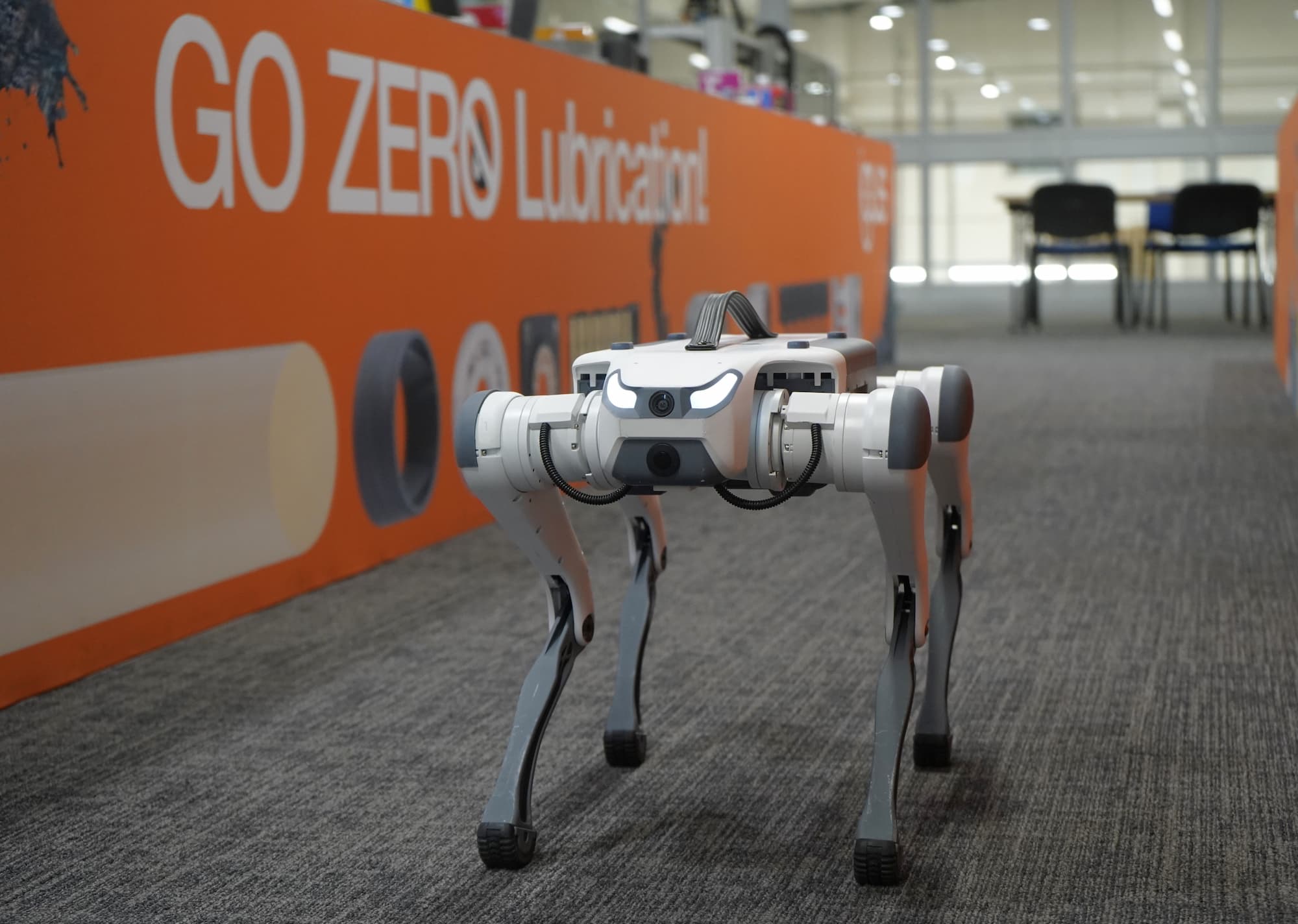

Man’s bionic best friend: Robotic dogs to the rescue
Robot dogs are being used for a variety of tasks, ranging from preserving heritage sites to assisting in manufacturing plants.
Advancements in robotic dogs designed for surveillance and security purposes are showcasing the rapid development and deployment of technology. These quadruped robots are equipped with advanced sensors and AI capabilities, allowing them to perform complex tasks autonomously, from patrolling military bases to assisting in disaster zones.
These four-legged inventions are branching out though, finding new and previously unheard-of purposes. A BBC news article titled ‘Robot dogs and drones used to protect UK heritage’ [1] explores the newfound role for robotic dogs to enter dangerous areas and provide detailed 3D models of what is happening inside, eliminating any further risk to life.
Although not designed for such high stakes scenarios, igus have now introduced their own quadruped robot, the SID1 bionic robot, an advanced robotic dog with an enhanced ability to interact with its environment due to real-time image transmission. “Our goal has always been to improve what moves,” says Adam Sanjurgo, Low-Cost Automation Product Manager at igus in Northampton. “With the SID1 bionic robot, we are able to demonstrate how our products can be applied in engaging and groundbreaking ways.”
The SID1 bionic robot is equipped with 12 degrees of freedom, allowing for highly flexible and dynamic movement. This makes it ideal for a variety of applications, from industrial tasks to more intricate operations that require precision and adaptability. The use of igus components ensures that the robot is not only lightweight but also durable and low maintenance.
“By integrating these materials into our range of robotic solutions, we are able to offer products that are both cost-effective and efficient.” Says Sanjurgo. The robot dog uses plain bearings which provide excellent wear resistance and low friction, essential for maintaining optimal performance over extended time periods.
One of the standout features of the SID1 bionic robot is its ability to navigate complex terrains autonomously. This capability is made possible through advanced sensors and AI algorithms that allow the robot to adapt to its surroundings in real-time. “This level of autonomy opens up new possibilities for deployment in environments that were previously challenging or inaccessible.” noted Sanjurgo.
As they continue to explore new frontiers in robotics and automation, igus remains dedicated to delivering solutions that enhance efficiency and sustainability. The launch of the SID1 bionic robot marks another milestone in their journey towards revolutionising how motion plastics can be used in high-tech applications.
igus have recently welcomed their own SID1 robotic dog to their Northampton site, an exciting addition to the team and the enjoyneering experience. Yet to be named, igus are encouraging visitors to come and meet this four-legged team member for themselves and even offer up some name suggestions.
[1] Robot dogs used to protect heritage sites like York Minster – BBC News















